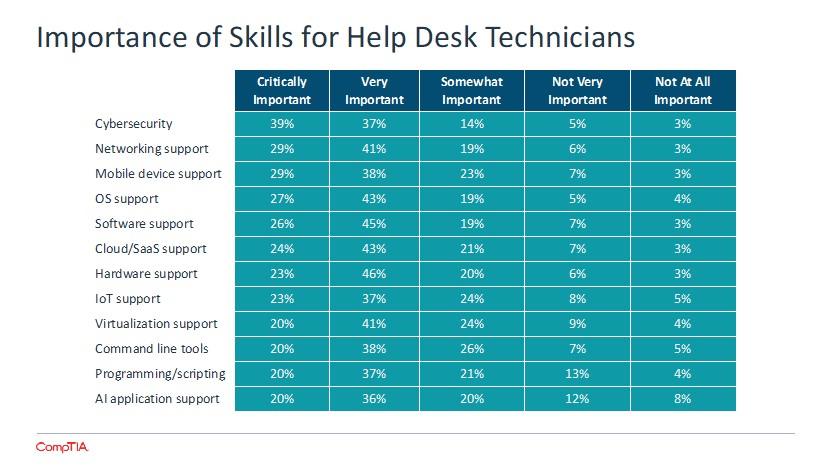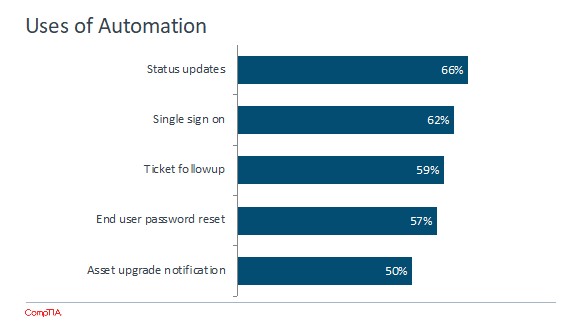 Last month, I wrote about the ways that IT pros can drive their organizations toward cutting-edge technology adoption. As businesses get back on their feet after two years of pandemic turmoil, they are also getting back to strategic IT, where a stronger focus on emerging technology can accelerate growth or create new customer opportunities.
Last month, I wrote about the ways that IT pros can drive their organizations toward cutting-edge technology adoption. As businesses get back on their feet after two years of pandemic turmoil, they are also getting back to strategic IT, where a stronger focus on emerging technology can accelerate growth or create new customer opportunities.
At the same time, organizations can’t ignore the fundamentals. A strong technical foundation is critical for exploring new avenues, and that foundation needs constant maintenance and enhancement.
Technical support is basically the bedrock of the entire IT effort. From an operational standpoint, it’s the first line of defense for user problems. And if employees are using technology more and more for their day jobs, any hiccups can have big downstream effects.
From a talent standpoint, the help desk is still one of the best ways to bring in technical expertise. The career pathway doesn’t have to be limited to infrastructure; many organizations are promoting tech support specialists into more advanced roles in software development, cybersecurity or data.
So, what are the big ticket items (pun intended) for the help desk as businesses go through digital transformation? The focus areas for IT pros working in technical support fall into two buckets:
- The skills needed for success
- The processes that keep the help desk humming
Evolving Tech Support Skills
More than anything else, technical support specialists are problem solvers. This means that they need a wide range of knowledge to understand which part of a technical process is breaking down. This breadth of expertise is a key reason that companies are using the help desk as the beginning of a career on any technical pathway. Even as organizations need breadth, though, there are specific areas that should be the focus of skill development.

At the top of the list is something that wasn’t always a priority for help desk technicians: Cybersecurity. Many organizations are building cybersecurity teams with dedicated specialists, but the importance of cybersecurity to digital operations means that security is everyone’s job.
There are two ways that IT support technicians need to employ cybersecurity best practices. Technical skill is needed for recognizing security threats, fixing basic problems and performing triage for larger issues. In addition, education for end users has become important as phishing and social engineering are more common.
The second critical skill is more of an old standby. After toying around with a bring your own device (BYOD) approach, most organizations are moving back to corporate-owned devices, mostly to make device management more efficient.
Corporate-owned devices aren’t necessarily limited in scope, though. There is a wide array of devices to support (laptops, smartphones, tablets, IoT sensors), and all these devices run on different operating systems (Windows, macOS, iOS, Android). In order to give employees flexible options for productivity, an organization must invest in well-rounded support for the various options.
Finally, the help desk has to support the back end. The business world was moving gradually toward cloud systems over the past decade, and that move sped up dramatically during the pandemic.
Help desk technicians might not be directly migrating systems to cloud providers or orchestrating multi-cloud architectures, but they do need to be familiar with cloud concepts. This familiarity allows them to solve routine issues and route more advanced problems to the correct area.
Revolutionary Tech Support Processes
While the skillset for tech support specialists is evolving, the processes involved in running a modern help desk are going through bigger changes. In many ways, the help desk is still a tactical activity. But improvements in operations allow the help desk to play a role in broader IT strategy.
For starters, organizations are doubling down on the way they measure help desk success. For some organizations, this means implementing a ticketing system like Zendesk, Zoho or Jira. From there, it’s a matter of deciding which metrics matter. This could be ticket resolution speed, number of tickets resolved or other metrics that tie into business objectives. The ultimate goal for most organizations is customer satisfaction, and the data collected through the ticketing process feeds into the next two process refinements.
With a lot of data on hand, the obvious next step is analysis. This doesn’t have to mean bringing in a data scientist to unearth hidden insights (although some organizations may be ready to try that out). Analysis can start small, maybe by collecting data points in a spreadsheet and reviewing as a team to look for patterns. Solid analytics can lead to better methods for assessing technician performance or new ways of forecasting future demand.
Finally, the help desk function can take the data they’ve collected and the analysis they’ve done and start automating certain pieces. Looking at the most common uses of automation within technical support, it’s clear that automation can both improve the operations of the help desk and also drive higher customer satisfaction. Automation doesn’t mean that an organization is trying to eliminate the role of the help desk—it means that a company is trying to let help desk workers focus on higher-value activities.

With so many new things happening in the world of technology, it can be easy to assume that traditional pieces of IT are fading into the background. That assumption couldn’t be further from the truth. These traditional pieces, like help desk, are more important than ever, and organizations need employees with the most up-to-date skills in order to make these traditional pieces fit into an innovative IT approach.
Get the skills you need at the help desk with CompTIA A+. The new version of the exam and training solutions will be available later this month, but you can download the exam objectives now to start studying.

